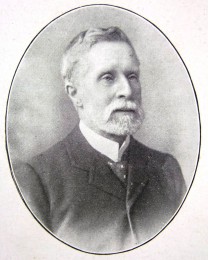
Kieran’s Our City, Our Town,
Cork Independent, 1 March 2012
Technical Memories (Part 8)
Arthur Hill’s Incursion
In an obituary in the Irish Independent, 16 July 1943, it notes that Arthur Frederick Crawford was born in Dublin in 1862 and educated at Eastbourne College. He was Deputy Lieutenant for County Cork and a member of the Synod of the Church of Ireland. He was a well known as a yachtsman and a former commander of the Munster Royal Yacht Club. He was also a founder of Cork Golf Club. For a time he also joined in the meets of the United Hunt, of which he was a Joint Master for a time.
On his bequest of the building and site of Arnott’s Brewery to the Cork Technical Instruction Committee, an article in the Freeman’s Journal in February 1909 notes:
“There is a rent of £124 on the site, which is now given free of all rent and charges. The walls of the building are perfectly sound, and the ground is so solid as to obviate the necessity for extra foundations and the spending of thousands of pounds on such work. The offer is appreciated as another manifestation of the public spirit and generosity, which gave the southern city the Crawford School of Art many years ago”.
In October 1909, the tender of Samuel Hill was accepted for the building of the new institute. Irish materials were ordered to be used wherever possible, and in October 1911, the building was sufficiently advanced as to enable a full scheme of classes for the session 1911-12 to be held in it. The Institute was formally opened on 18 January 1912 by the then Lord Mayor of Cork, Alderman James Simcox.
In planning the building the chief aim of the architect Arthur Hill was to take the greatest possible advantage of the old buildings on the site and to incorporate them in the scheme so as to produce a substantial building for the amount of money available. Those old buildings, which had to be removed formed a very useful supply of building materials and it was noted that to obtain the same cubic capacity of classrooms, laboratories, the cost would have almost doubled, if full advantage had not been taken of the old buildings. The new part was built in Classic Architecture of Ballinphellic brick, and local limestone from the Little Island (County Cork) quarries.
Arthur Hill (1846-1921) was a reputable architect in his day and has left Cork city with many beautiful architectural set pieces, all of which are worth of multiple studies in themeselves. In an obituary to him in 1921 in the Journal of the Cork Historical and Archaeological Society, it highlights that Arthur was born in Cork on 8 June 1846, the son of the well-known Cork architect, Henry Hill, by whom he was sent to the local School of Art at an early age. Later Arthur attended a private school for general education afterwards graduating in the Queen’s University as Bachelor of Engineering, in 1869. He served in the office of the famous architect, Thomas Henry Wyatt, at the time when the Liverpool Cotton Exchange was being erected, and attended the lectures of Professor Heyton Lewis at University College, Cork.
Arthur became a life student of the Royal Academies in London. His measured drawing of the round part of Temple Church gained for him an award of a Silver medal in 1871. He also attended classes at the Architectural Association and the West London School. His devotion to his art convinced him to travel over many parts of Europe to draw architectural objects by pencil. He expressed an enormous interest in the ancient buildings of Ireland, particularly the development of ‘Celtic Romanesque’. The Institute of British Architects, presented him with two silver medals for his careful surveys and manuscripts relating to Ardfert Cathedral, Temple Monaghan, Kilmalchedar and Cormac’s Chapel. In the early 1870s, he entered into partnership with his father, the firm being known as Henry and Arthur Hill.
At this period Arthur’s work was inspired from Gothic, Early French and ancient Irish models, which he incorporated with many of his modern draughts, such as 31 and 80, Patrick Street. The former, unfortunately, was destroyed by the burning of Cork in December 1920, and the latter was pulled down for the erection of the Pavilion Cinema in 1924. The Munster and Leinster Bank at Kilmallock is also built from plans embodying ancient architecture. The Crawford School of Art and Gallery, opening in 1885, were constructed after drawings from the firm. When his father died in 1887, Arthur took direction of the firm.
Arthur was architect for many important buildings such as, the additions to the North Infirmary, the Victoria Buildings, no.13 and 16 Patrick Street (both destroyed in 1920), the Cork Examiner Printing Works as well as many shops in Cork and the country towns, and designed numerous pretty villas in Cork and its hinterland. The science laboratories at University College, Cork, the Cork Technical Institute and the Munster and Leinster Bank were his chief works previous to the war. For many years he held the post of Lecturer on Architecture at the College.
To be continued…
Caption:
630a. Arthur Hill (source: Richard Hodges, 1911, Cork and County Cork in the Twentieth Century)